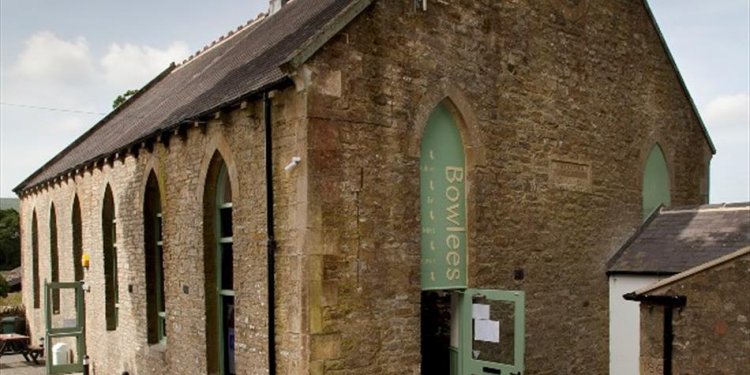
Attractions Newbiggin United Kingdom
 Thaxted windmill and church spire
Thaxted windmill and church spire
Thaxted is built around 4 historic buildings; a medieval timber-framed guildhall, a restored 18th century windmill, a pair of chocolate box almshouses, and a magnificent medieval church. On top of that, there are historic buildings highlighting every time period from medieval to modern.
History
The settlement of Thaxted dates back to at least the Saxon era and it was already a thriving community long before the Normans arrived in England, and there was a church here as early as 981AD. In 1205 a market charter was granted, though it seems likely there was already a market long before this. From the 13th century Thaxted became a centre for the cutlery industry, in part because of cheap rents charged by local landowners!
 Thaxted Guildhall
Thaxted Guildhall
St John the Baptist Church
The current church building was begun in 1340, though it was not complete until 1510! It is unquestionably one of the finest town churches in the east of England. Above the porch are carvings of two wild men carrying clubs, similar to the 'woodwose' figures found in Suffolk. Edward IV gave the north porch, and Lionel, Duke of Clarence, gave the south porch. John Ball, instigator of the 1381 Peasant's Rebellion, once stayed in the chamber over the south porch. The church is notable for its stained glass, which ranges from 14th century glass depicting of Edmund, Earl of March, to late Victorian glass by C.E. Kempe, the famous Victoria glazier (look for Kempe's wheatsheaf symbol in the chancel and Becket chapel). The font is dwarfed by a glorious 15th century cover.
John Ball, instigator of the 1381 Peasant's Rebellion, once stayed in the chamber over the south porch. The church is notable for its stained glass, which ranges from 14th century glass depicting of Edmund, Earl of March, to late Victorian glass by C.E. Kempe, the famous Victoria glazier (look for Kempe's wheatsheaf symbol in the chancel and Becket chapel). The font is dwarfed by a glorious 15th century cover.
Gargoyle on St John's Church
Thaxted's most famous (or infamous) vicar was 'Red' Conrad Noel, who served from 1910-1942. Noel was controversial for his leftist views, and controversy seemed to follow his every action. He once famously hung a socialist red flag beside a Sinn Fein banner and the Cross of St George inside the church, thus launching a 'Battle of the Flags', which eventually resulted in the church authorities ordering the flags removed. Noel also purchased The Chantry almshouse for the church, and helped found the Thaxted Morris Men.
He once famously hung a socialist red flag beside a Sinn Fein banner and the Cross of St George inside the church, thus launching a 'Battle of the Flags', which eventually resulted in the church authorities ordering the flags removed. Noel also purchased The Chantry almshouse for the church, and helped found the Thaxted Morris Men.
The Almshouses
To the right of the path leading from the windmill to the church is a thatched Chantry cottage, built to house the local priest in the 14th century. It later was split into 4 separate dwellings and served as an almshouse. Opposite the Chantry and forming a picturesque pair of buildings is a second almshouse, bult about 1714 on the site of an earlier medieval chantry. Though roughly the same size as the Chantry, this almshouse accommodated up to 16 elderly people.
The Windmill
Webb's WindmillIn 1804 a local farmer and businessman named John Webb built a windmill from red brick, looking across a slope of land at the edge of town. Webb owned the Swan pub, as well as the local brick and tile works. The mill operated until 1907, and later served as a youth centre. Beginning in 1970 it was slowly restored to working order. The mill has a wooden gallery around the base, and benches to sit and admire the view. There is a small rural museum inside, with one of the prize exhibits being the manually operated town fire pump. There are wonderful views rom the mill to the ruins of Tilty Abbey far n the distance.




















